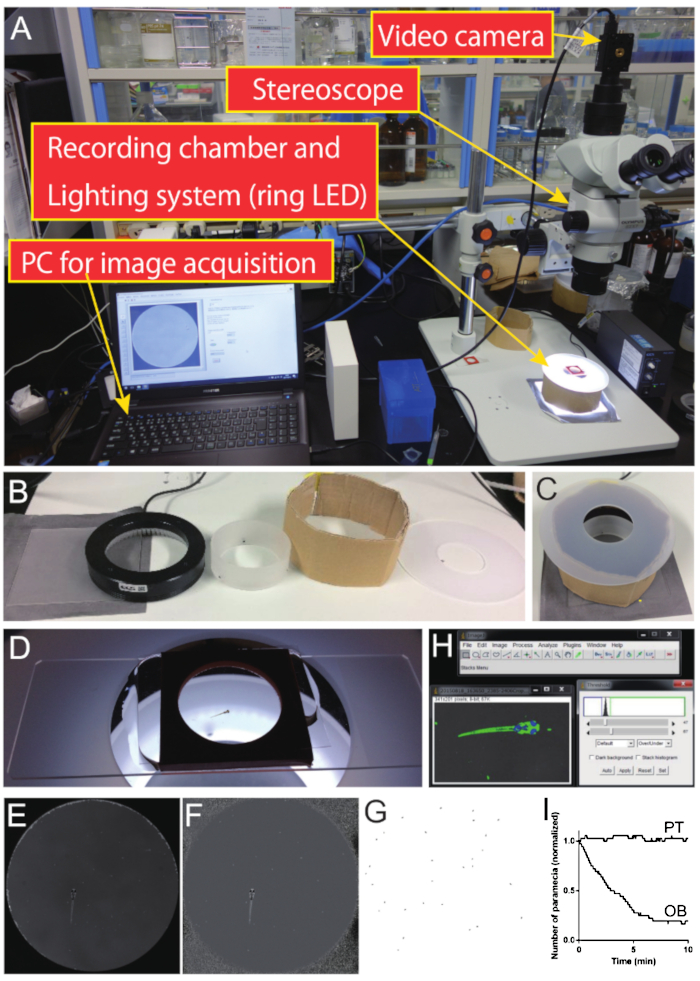A subscription to JoVE is required to view this content. Sign in or start your free trial.
Prey Capture Assay: A Method to Study the Prey Capture Behavior of Zebrafish Larva
Overview
This video describes the prey capture assay. The video discusses the method to study prey capture behavior of zebrafish larvae after the laser ablation of specific neurons.
Protocol
1. Assessment of Behavioral Consequences Following Laser Ablation
- Set up a behavioral recording system that consists of a stereoscope equipped with a video camera. Use a camera with an appropriate image acquisition software, commercial or custom-made (Figure 1A).
- Optimize the lighting condition so that the paramecium can be detected by image processing. For example, use a ring white LED light with a spacer (Figure 1B).
Note: The distance from, and the angle of, the LED affects the appearance of the sample (i.e., bright in dark background or dark in bright b....
Results

Figure 1. Prey capture assay and representative data in laser-ablated zebrafish larvae. (A) Behavioral recording system. The stereomicroscope was equipped with a CMOS camera. Images were acquired using a custom-made script. (B) Components of the lighting system. A grey-colored paper, a glass diffuser, white LED ring light, diffuser, a custom-made spacer (cardboard), and diffuser.......
Materials
| Name | Company | Catalog Number | Comments |
| Imageing Chambers | Grace Bio-Labs | CoverWell Imaging Chambers PCIA-2.5 | Used as a behavioral recording chamber |
| ORCA-Flash4.0 | Hamamatsu Photonics | Model:C11440-22CU | A scientific CMOS camera |
| SZX7 | Olympus | Stereoscope | |
| A ring LED light | CCS | Model: LDR2-100SW2-LA | White LED |
| Secure-Seal Hybridization Chamber Gasket, 8 chambers, 9 mm diameter x 0.8 mm depth | Molecular Probes | Catalogue # S-24732 | Used as a recording chamber in Ca imaging |
This article has been published
Video Coming Soon
Source: Muto, A., et al. Ablation of a Neuronal Population Using a Two-photon Laser and Its Assessment Using Calcium Imaging and Behavioral Recording in Zebrafish Larvae. J. Vis. Exp. (2018)
Copyright © 2025 MyJoVE Corporation. All rights reserved